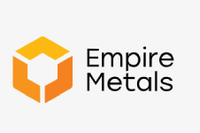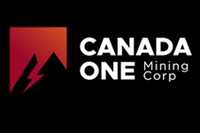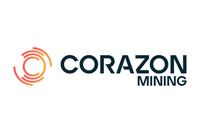Copper Demand to Remain “Incredibly Weak” in Q2, Prices to Go Up in H2
Kieran Clancy of Capital Economics told INN that copper demand is forecast to remain weak in Q2, but prices could rebound in H2.
After suffering the first three months of the year, copper won’t take a breather, with demand for the red metal expected to be sluggish in Q2, according to Kieran Clancy of Capital Economics.
“With the virus-related disruption still yet to peak in most major copper consumers (other than China), we expect copper demand to remain incredibly weak in Q2 as well,” he told the Investing News Network.
Capital Economics’ in-house proxy of copper demand puts demand growth at -2.5 percent in January ― the latest month for which there is available data.
“Clearly, things have got much, much worse since then,” Clancy said. “Even in China, where the economy is now slowly returning to normality, we expect a 16 percent year-on-year fall in Q1 GDP.”
Looking over at how recent supply cuts, project delays and expansion suspensions could help offset the lack of demand, Clancy said that what has been announced so far won’t come close to offsetting the enormous virus-related hit to copper demand.
Copper prices are down more than 20 percent year-to-date. Starting the year at US$6,165 per tonne, the red metal touched its lowest point of the first quarter on March 23 at US$4,617.50.
Capital Economics expects copper to fall further in Q2, potentially reaching a low of US$4,000.
“By the second half of the year, we expect the price of copper to start rising again,” Clancy said. “However, and this is crucial to stress, our more positive view on copper prices in H2 rests on the assumption that measures to contain the virus begin to be relaxed during this period.”
Measures implemented by governments around the world to contain the virus are putting further strain on the demand side of the equation, as people are asked to stay home, construction projects are suspended and stimulus spending packages are yet to be determined.
“Until these virus measures start to be lifted, copper demand will not recover, no matter how much support is unloaded by policymakers,” he said. “Even in our central forecast, we think that copper prices will only reach US$5,500 by year end, which would be significantly below where they began the year.”
When asked if production restarts and new projects will be impacted if copper continues to trade at low prices, Clancy said that it depends entirely on how long copper prices remain at these levels.
“If, as we expect, the price of copper starts to recover from Q3 onward, it is unlikely that we start to see further delays or outright cancelations,” he said. “However, if prices remain lower for longer, that is clearly the direction we are headed in.”
Clancy said that even before the virus broke out, Capital Economics had expected copper supply to become increasingly outweighed by demand over the next decade or so.
“That’s because we expect demand for copper in electric vehicles to gather pace over that period, and due to the thin pipeline of new copper mine projects further out,” he said. “So if more projects start to be canceled, the timeline for this mismatch of demand and supply over the next few years could occur sooner than we currently expect.”
Speaking about what factors investors should look for in Q2, Clancy said that undoubtedly the key thing to watch is any signs that global virus containment measures are starting to be relaxed.
“Until then, copper demand will remain almost non-existent,” he said.“While we don’t think cuts to supply that have been announced will do enough to neutralize the hit to demand, that also may change.”
He added that, for example, if the scaling back of mine operations were to be both deepened and extended significantly, particularly in Peru and Chile, that might help balance the copper market.
“But that doesn’t yet seem to be on the horizon, which is why we think the price of copper will fall further in Q2,” he said.
Don’t forget to follow us @INN_Resource for real-time updates!
Securities Disclosure: I, Priscila Barrera, hold no direct investment interest in any company mentioned in this article.
Editorial Disclosure: The Investing News Network does not guarantee the accuracy or thoroughness of the information reported in the interviews it conducts. The opinions expressed in these interviews do not reflect the opinions of the Investing News Network and do not constitute investment advice. All readers are encouraged to perform their own due diligence.




